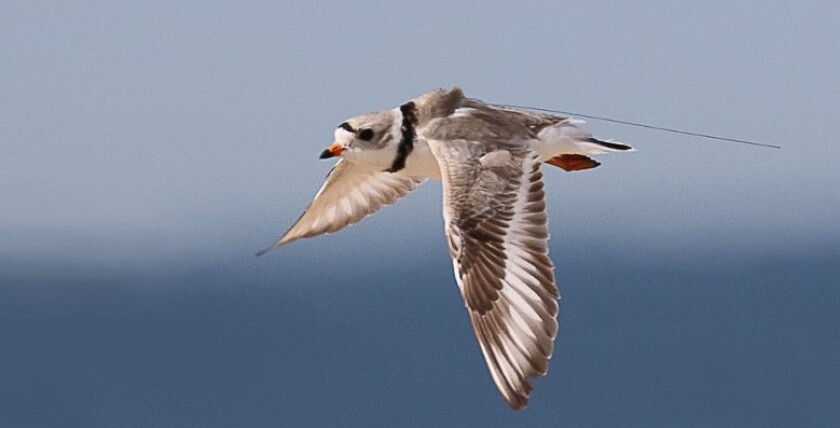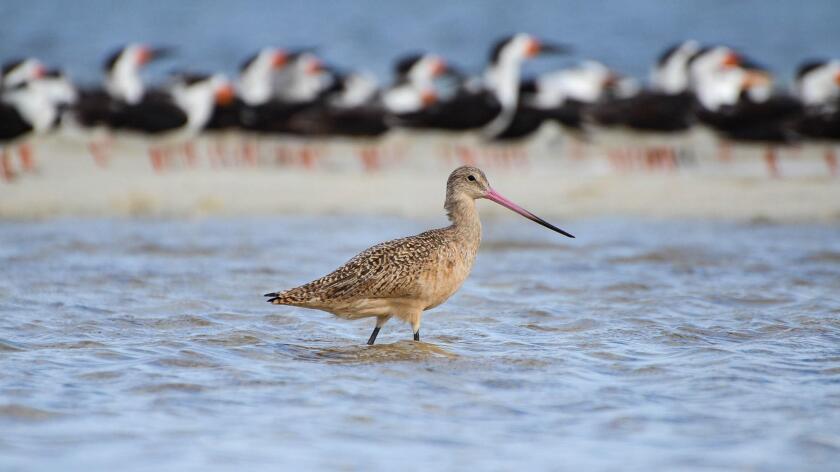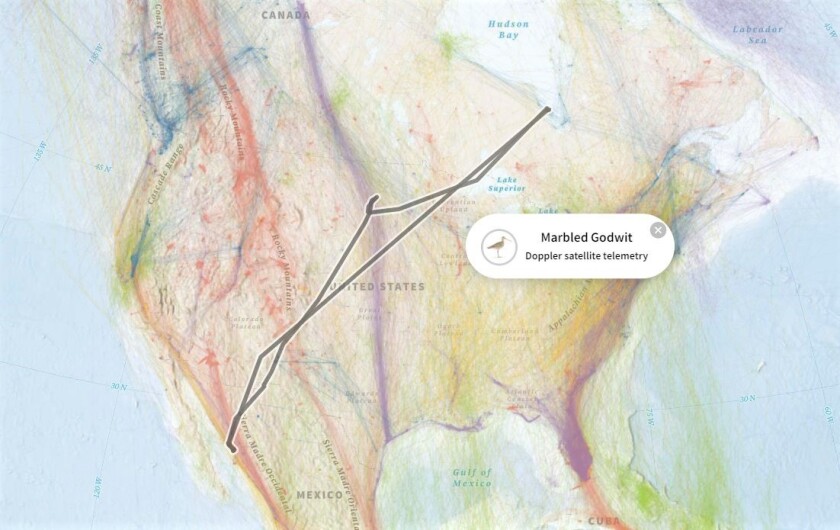DULUTH — First to be noticed were the Canada geese — hard to miss that honking — and the ring-billed gulls, who suddenly appeared in Duluth for yet another season of hunting french fries.
Then the robins were noticeable in their seemingly too-early arrival, even as an April snowstorm was raging, and swans, hawks and eagles were already stopping by on their way north to stake their claim on prime nesting spots.
ADVERTISEMENT
It’s a seasonal journey, an ordeal for survival for many birds, that can often cover thousands of miles and many weeks. But every year we're captivated as the great push of birds northward arrives in spring.
A bay-breasted warbler, for example, weighs about the same as four pennies. But each spring, they fly nearly 4,000 miles between their wintering grounds in South America and Canada’s spruce forests, where they nest and raise their young.
Now, you can follow along on their northward trip, which might bring some of them winging over the Northland, thanks to an online atlas of bird migration. The Bird Migration Explorer, , is a free mapping tool, drawn from an unprecedented number of scientific and community data sources to illustrate the routes of 458 bird species in the Americas, including warblers. More than 4 million tracking data points have been used to map migrations.

It’s not an app, per se, but it works on phones and tablets as well as computers — a website that offers access to all of its contents from a single page.
The explorer is part of an ongoing collaboration between 11 groups that collect and analyze data on bird movements, including the Cornell Lab of Ornithology, Smithsonian Migratory Bird Center, the U.S. Geological Survey, Georgetown University, Colorado State University and the National Audubon Society.
It debuted just in time for last fall’s southward rush of birds and is now kicking in for its first northward migration season. You can even see the time of each month they are most likely to be around.
“We’re really just getting going at getting the word out. This is our first spring migration and it’s a really good time to explore the Explorer to see what’s coming through your area and when,’’ said Melanie Smith, program director for the Bird Migration Explorer for Audubon.
ADVERTISEMENT

The site brings together online data from hundreds of scientific studies that use GPS transmitters, MODUS radio telemetry transmitters to track bird movements, as well as more than 100 years of bird-banding data collected by the U.S. Geological Survey, community science observations entered into Cornell’s eBird platform, genomic analysis of feathers to pinpoint bird origins and other data.
Smith called it this “golden age’’ of bird tracking as devices get smaller and lighter and as more scientists are working to see where the birds are coming from and going to, with the end goal protecting more species and their habitat from decline. The new science has especially helped fill in the routes each species takes north and south.
“The past 20 years have seen a true renaissance in different technologies to track bird migrations around the world at scales that haven’t been possible before,” said Peter Marra, a bird migration expert at Georgetown University who collaborated on the project.
The site allows a user to enter a species — for instance, osprey — and watch movements over the course of a year. For example, data from 378 tracked ospreys show up as yellow dots that move back and forth between coastal areas of North America and South America as a calendar bar scrolls through the months of the year.

Smith noted she found the track of a marbled godwit that will have spent its winter off Mexico and may well wing over Duluth again on its way to James Bay in Canada.
“You really seem to be on an active point for migration,’’ Smith said of the Duluth area.

Type in "woodcock," for example, and you can see where birds fitted with transmitters in north-central Minnesota migrated to Louisiana. Let the animation run and watch their movements south, north and back south again over the years. Type in "bald eagle" and watch as little yellow dots, representing each eagle with a transmitter, flies north — so many over Duluth that it becomes the bald eagle capital of the world each spring.
ADVERTISEMENT
Users can also enter the city where they live and click elsewhere on the map for a partial list of birds that migrate between the two locations. Type in "Duluth" and "Florida," for example, and you can track common terns, eagles and ospreys that have made that trip. Another search finds a golden-winged warbler that was linked from Duluth to Cantagallo, Colombia.
Throw in "Grand Forks, North Dakota," and "Texas" and you can track eastern whip-poor-wills, peregrine falcons and mourning doves that make the trip over the city.
The website was the brainchild of scientists and organizations that wanted a way to get reams of data into the hands of birders and conservationists who might be interested. As new tracking data becomes available, the site will continue to expand.
Georgetown’s Marra hopes that engaging the public will help spotlight some of the conservation challenges facing birds, including loss of habitat and climate change.
In the past 50 years, the population of birds in the U.S. and Canada has dropped nearly 30%, with migratory species facing some of the steepest declines.
Follow bird migration by radar

The website uses radar reports of large bird movements to forecast when migrations will move over a certain area. It’s color-coded so you can see when peak migration might occur in your areas. It doesn’t differentiate what species are moving, but Birdcast.info can help you plan when you might head out to see the big push of birds moving north.














